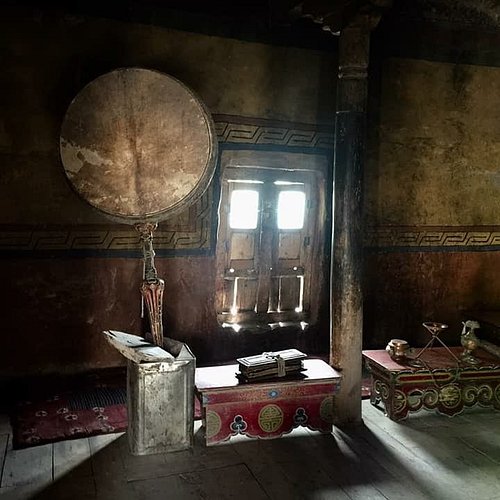Top 5 History Museums in Ladakh, Jammu and Kashmir
Bounded by the Karakoram and Himalayan mountains, Ladhak is the largest province in the state of Jammu and Kashmir. The landscape of Ladhak, a high altitude desert, is defined by craggy, barren cliffs and plateaus. Ladhak is a favorite among adventure sports enthusiasts, offering unique adventures in trekking, mountaineering and white water rafting. While rafting options are available on both Indus and Zanskar rivers, the Zanskar course is more difficult and exciting. The trekking options range from short, day-long walks to visit monuments or monastic settlements to long, trans-mountain treks involving weeks of walking and camping in the wilderness. Ladhak celebrates a numbers of monastic festivals - annual events of the major monasteries primarily in winters. The month of September, hosts the Ladhak Festival, that gives a peek into the richness, depth and pageantry of Ladakh's centuries-old culture, traditions and folk heritage. One can witness the best samples of the region's performing arts, Archery contests and the Ladhak Polo Cup.
Restaurants in Ladakh
1. Unlock Hundurman - Museum of Memories
Overall Ratings
5.0 based on 2 reviews
Hundurman, an abandoned Purgi settlement in Kargil located at the LOC (Line of Control), came under the territory of India post 1971 Indo-Pak conflict. The rediscovery of the settlement in the form of artefacts and memories has evolved into a living museum.. The experience is designed to give visitors a unique perspective into the history and culture of an otherwise unknown settlement of Kargil.
2. Gyap-Thago Heritage Home
Overall Ratings
5.0 based on 1 reviews
3. Munshi Aziz Bhat Museum of Central Asian and Kargil Trade Artifacts
Overall Ratings
4.5 based on 11 reviews
A family-operated, Public Museum dedicated to preserving the life and legacy of Munshi Aziz Bhat - A Silk Route trader, pioneer, visionary, social entrepreneur, collector, patriot, husband and father. Our museum offers anyone who visits, a rare glimpse into the Indian and Central Asian trader culture of the 19th and early 20th centuries. Through its collection of artifacts and mercantile items, the museum exhibits the range of goods and services that were transported on the many maritime and overland trajectories of the Silk Routes. Apart from the commerce, the Silk Route memorabilia at the museum is an enduring peek into the lives of the many merchants, horsemen, herders, pilgrims, artisans, nomads and farmers who traversed these trader routes and evolved a culture that saw its ultimate demise with the growth of mechanized trade and reorganization of boundaries in the post-independence era.
4. Balti Heritage House and Museum
Overall Ratings
4.0 based on 10 reviews
This heritage house is around 140 years old and it has been converted into a museum which showcases old traditional attires, heirlooms, antiques and more
Reviewed By Lovers_paradise
The Balti Heritage Home in Turtuk is one of the heritage homes where several generations have lived for centuries. It’s built in an old style with low-height roofs, very small windows to avoid cold air coming in during winters and storage rooms in the basement. You can see several arms, dishes, royal gifts, dresses, furs dating 400 years back inside the house. The entrance cost to the museum is 50 rupees. There are four small rooms which you can explore in ten minutes. Nevertheless, there is an extra value if any of the family members can explain to you what you see. There are presents from kings of the land, some old technology of cooking and several other interesting facts. The Balti Heritage Home is in the upper part of the village. There is a rooftop restaurant where you can try Balti cuisine.
5. Gyapthago Heritage Home and Guest House
Overall Ratings
5.0 based on 1 reviews




